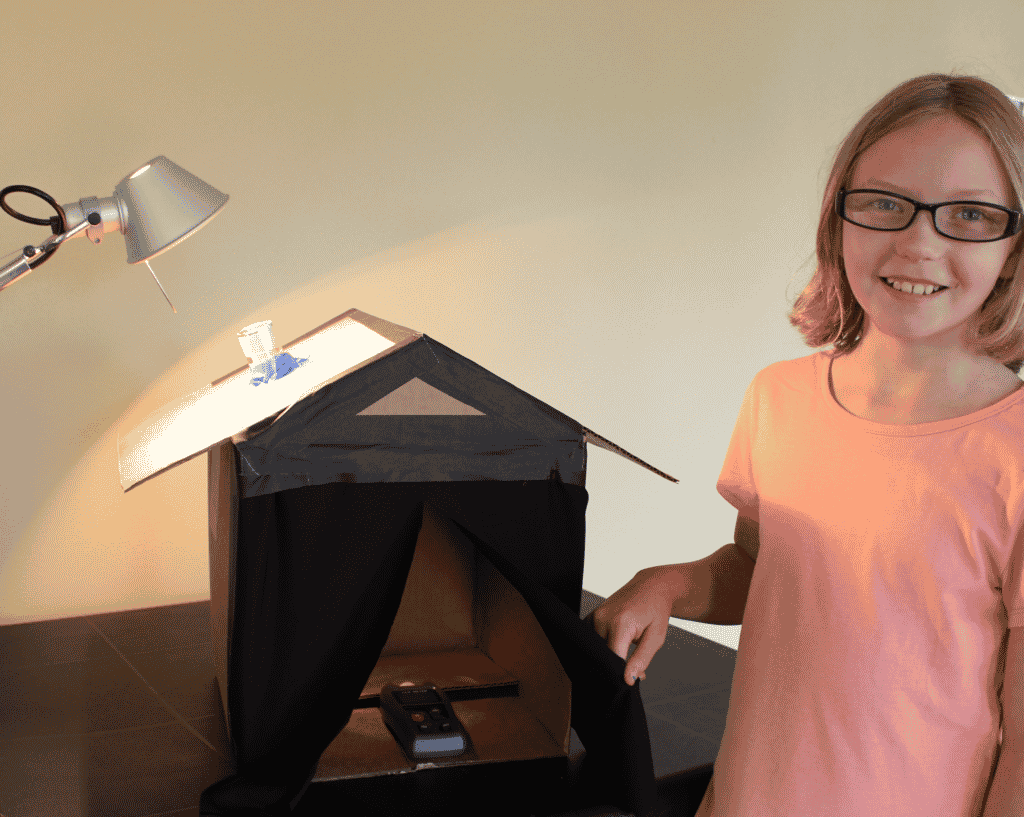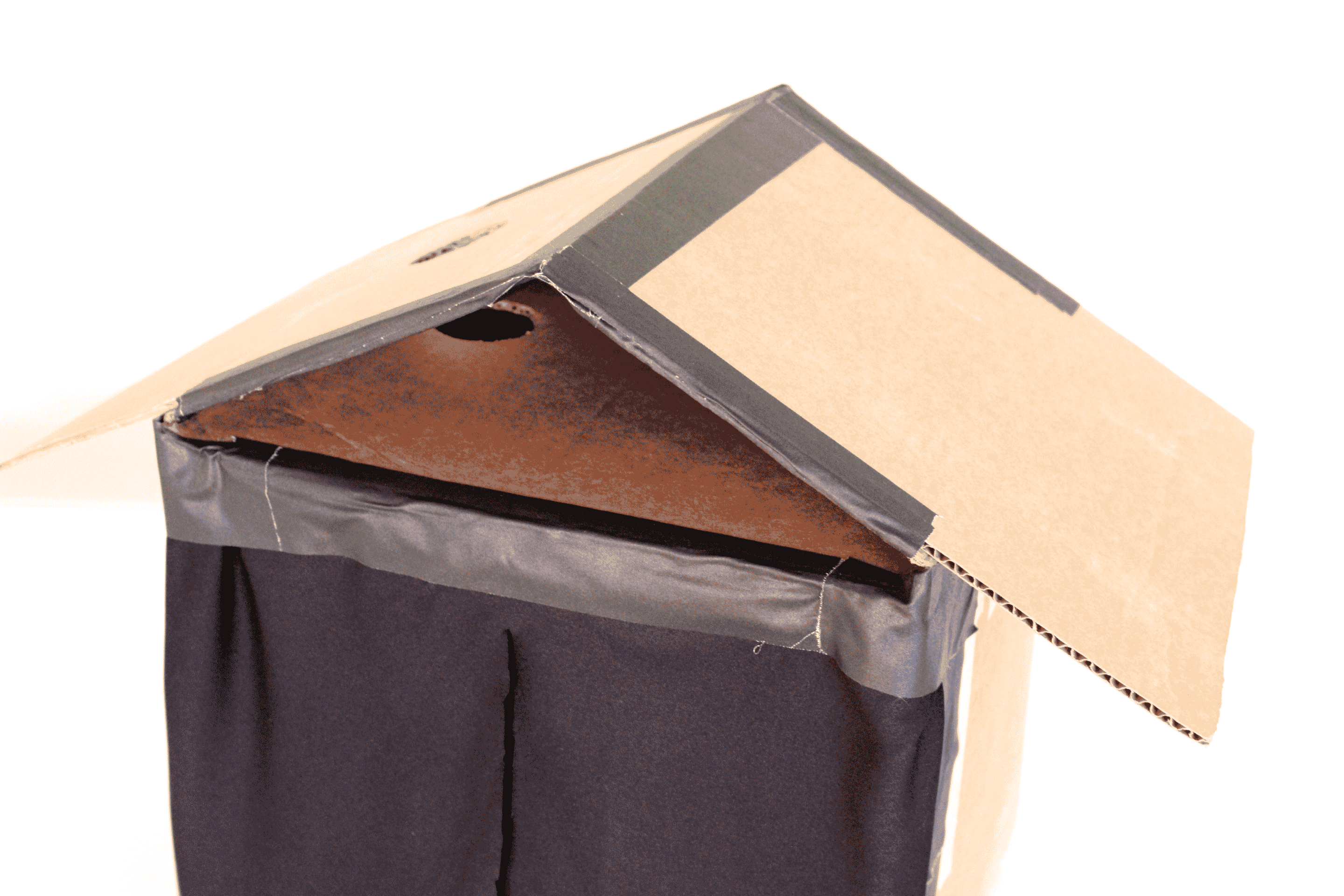Overview
Materials
Per Pair of Students:
|
For Testing Light Tubes
|
Instructions
Make a house out of cardboard with a roof, a ceiling, and only three walls. It should be about 1 foot square with a 2 inch diameter hole in the roof and ceiling. Seal all seams with dark tape. Students will test their light pipes by inserting them into the holes, so the roof has to be sturdy enough to withstand many pipes being taped and untaped from it. Build the house so it’s practical to test the amount of light that reaches the inside floor, using a light meter or lumen-measuring app. It will help to have a cloth apron on the open side of the house to help block out the ambient light.
DEFINE THE PROBLEM:
- Ask students to name various ways to create light inside a building with no windows (lamps, candles, glow sticks, for example). Ask students to list the problems with these light sources.
- Explain that many buildings use light tubes, or pipes, that illuminate interiors without using fossil fuels or energy. The top of the pipe gathers the sun’s rays on the roof, which reflects on the mirror-like surface inside the pipe. The pipe carries the light across the gap between the building’s roof and the ceiling. The pipe delivers the sun’s rays into the room so that people can use natural light indoors.
- Show students the mirror. Hold it in the path of sunlight or near a lamp and reflect light onto a wall. Explain that light rays reflect off the mirror, and the inside of the light pipe works the same way.

- Show students the cardboard house and the light meter. Give students their challenge: build a light pipe that generates the most light, as measured by a light meter, when inserted into the roof of the cardboard house. Their light pipe must fit into the roof hole and must be long enough to bridge the gap to the hole in the ceiling below.
- Place students in pairs. Pass out drawing supplies and tell students to imagine and sketch several designs. Have them consider the diameter of tubes, length of tubes, lining materials, and shape of tubes (cylinder vs. cone).
Tell students to pick one of their designs to try out. As they build their prototype, they can make changes to their design. They may also test it out using the light meter. - Test each final design by taping it into the hole in the roof so that no light comes in around the edges of the tube. Use a lamp or sunlight and a light meter, and note the number of lumens emitted by each light pipe.
- As a class, investigate which designs produced the most light. What aspects of the designs make them effective? What improvements could they make?
BRAINSTORM AND DESIGN:
TEST AND REDESIGN:

Guiding questions
- Which materials cause the most light to reflect from one end of the tube to the other?
- What other materials and designs would you use to improve the amount of light that gets into the house?
- If you could include a mirror in your design, where would you place it? How would it work?
- If you could put in different light pipes to capture light at different times of day, how would you design the pipes and where would you put them?
Major funding by the Lemelson Foundation. Project funding is provided by United Engineering Foundation (UEF), the National Council of Examiners for Engineering and Surveying (NCEES), and the UL Innovative Education Award.


0 Comments